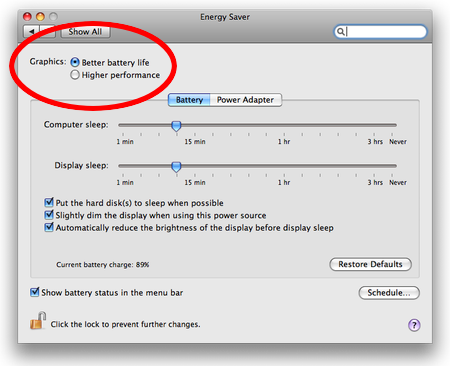Original URL: https://www.theregister.com/2008/10/24/review_laptop_apple_macbook_pro/
Apple MacBook Pro 15in
A powerful, professional piece of kit
Posted in Personal Tech, 24th October 2008 11:31 GMT
Review The new MacBook Pro may not be the total revamp that the renewed MacBook is, but it’s an attractive – and intriguing – update nonetheless.
The aluminium chassis has been slightly modified – curved edges similar to those of the MacBook Air make it marginally slimmer and give it a less rectangular look. The display's new glass covering runs across the full width and height of the lid, so there’s no longer a metal bevel running around the edge of the screen.
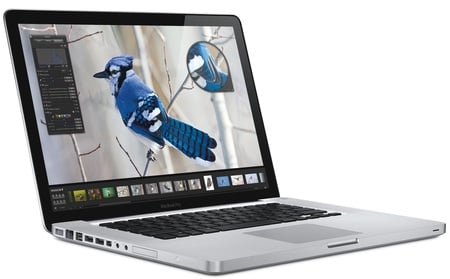
Apple's MacBook Pro: stylish new look
That makes the screen seems slightly larger, although it’s actually the same 15.4in panel used in the previous model. For the most part, though, the new MacBook Pro doesn’t look drastically different.
So the real challenge for Apple with this update was how to maintain – and justify – the price difference between the MacBook Pro and the new MacBook, given that the whole purpose of the redesigned MacBook was to make it more like the MacBook Pro.
There are two versions of the new MacBook Pro available. The first costs £1399 and comes with a 2.4GHz Intel Core 2 Duo processor, 3MB of L2 cache, 2GB of 1066MHz DDR 3 memory and a 250GB hard disk. We tested the second model, which costs £1749 and packs in a 2.53GHz processor, 6MB of L2 cache, 4GB of 1066MHz DDR 3 memory and a 320GB hard disk. Both HDDs are 5400rpm SATA units.

More slender
Both models have the same 15.4in, 1440 x 900 widescreen display, and the £1749 model can be further upgraded to a 2.8GHz processor for an extra £210, making it the most powerful laptop Apple has ever released. There’s also an option for a 128GB solid-state drive, but at an extra £490 we doubt this will appeal to many people.
The 2.4GHz MacBook Pro has a very similar specification to the 2.4GHz MacBook. The £250 extra you pay for the 'Pro' tag gets you that 15.4in display in place of a 13.3in, 1280 x 800 screen. Designers who need to use Photoshop or other graphics software will certainly prefer the larger display, although the screen alone wouldn’t be enough to justify the extra expense. However, the MacBook Pro does have an ingenious ace up its sleeve.
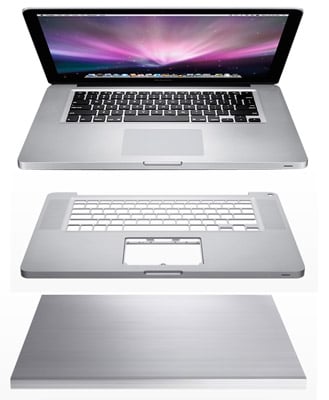
The casing has been been constructed from a single block of aluminium
The MacBook Pro has the same Nvidia GeForce 9400M integrated chipset as the ordinary MacBook, but it also has a second, faster graphics processor, the GeForce 9600M GT. When you need the longest possible battery life you can use the 9400M, and then just switch to the 9600M GT when you need maximum 3D performance for playing games, intensive graphics or video work.
Switching between the two graphics processors is very straightforward. When you open the Energy Saver control panel, there’s a simple option for switching graphics performance between "Better battery life" and "Higher performance". You don’t even need to shut the machine down to do this – although you do need to log out of your user account, and then log back in again. Alas, it's not an automatic process.
Still, logging out and in again only takes about ten seconds, but it does mean that you’ll need to shut down any open applications and save your work before switching between the two graphics processors. However, that’s a very minor inconvenience when set against the power-saving advantages of this dual graphics processor approach.
The 9600M GT is certainly faster than the 9400M, but it does shave about one hour off the battery life. Or rather, it allows you to use your Pro away from a power socket for at least an hour longer than you could have done if, as in past models, Apple had only equipped the Pro with a standalone graphics chip.
We tested the MacBook Pro with the 9400M graphics processor and got three hours of battery life when looping H.264 videos, and almost exactly four and a half hours when running less demanding programs, such as Microsoft Word and Excel. Switching to the more powerful 9600M GT did indeed knock a good hour off the battery life – though it was worth it to see a MacBook running Doom 3 properly at last.
Xbench Results
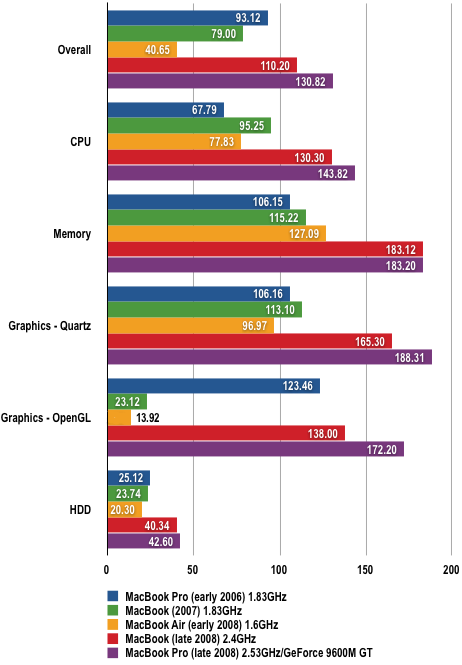
Longer bars are better
Like the standard MacBook, the MacBook Pro also includes a built-in webcam, along with two USB 2.0 ports, digital audio input and output, Gigabit Ethernet, 802.11n Wi-Fi and Bluetooth 2.1. It has the same large trackpad, made out of a small glass panel that acts like one big mouse button, along with the ability to use multi-finger gestures to control tasks such as right-clicking or quickly switching between applications. However, there are also a few other small differences that separate the MacBook Pro from the less expensive MacBook.
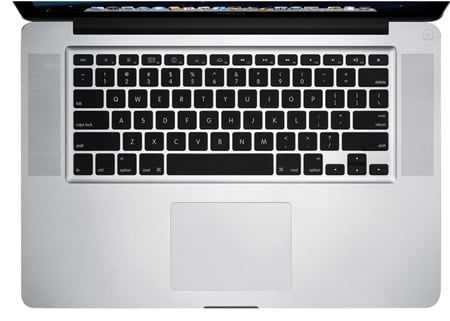
The large trackpad acts like one big mouse button
Long-time Mac users who noticed the lack of Firewire in the new MacBooks will be relieved to see that the MacBook Pro still has a Firewire 800 port. This provides almost twice the data transfer speed of an ordinary USB 2.0 port and there are lots of designers and video editors who use Firewire disks in their work, so this remains an important option for many Mac users. For these guys, that alone will justify the £250 price differential.
The MacBook Pro also has an ExpressCard 34 slot, which the standard MacBook lacks, for additional accessories and upgrades.
We were a little worried that the new MacBook Pro would have a built-in battery as the MacBook Air does. But we were relieved to see that the power pack is easily accessible through the base of the unit. In fact, a minor redesign here puts the hard disk, battery and memory slots all behind a single removable panel.

More ports than the standard MacBook
The battery indicator that used to be on the base of the unit is now on the left-hand edge, making it much easier to quickly check the battery level, while the DVD drive has been moved from the front to the right-hand side.
We need to mention the 17in version of the MacBook Pro. This model is listed as ‘new’ on the Apple website, alongside the two 15.4in models, but it’s only a minor update of the last-generation model. It doesn’t have the curvier aluminium casing of the new model, or the more-important twin graphics processors. It’s believed that the 17in model will be properly upgraded in a month or so, so anyone thinking of buying this version should wait to see when the full upgrade arrives.
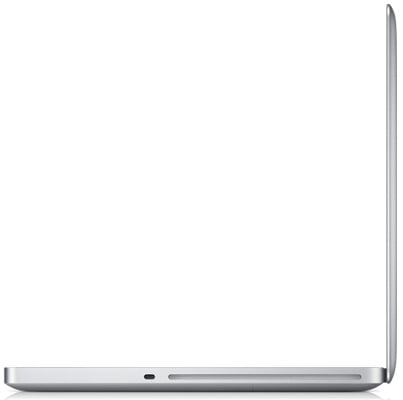
Slim
The price of the MacBook Pro obviously means that it’s more of a niche model than the mass-market MacBook. However, the larger screen and the versatility of the twin graphics processors will certainly appeal to Apple converts in fields like design and video editing.
Interestingly, we looked at the Alienware website and configured one of its Area 51 gaming laptops with a specification similar to that of the 2.4GHz MacBook Pro, and the Alienware machine came to just over £1500, compared to £1399 for the MacBook Pro. So Apple really has put together a competitive package with the new MacBook Pro and isn’t simply relying on fancy design to justify its high prices as it has done in the past.
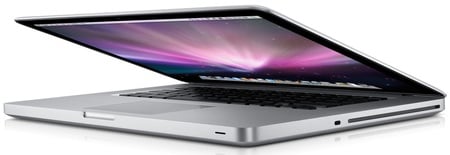
Two graphics cores for the price of one
In fact, the real threat to the MacBook Pro comes not from its PC rivals but from its baby brother, the recently upgraded MacBook. The improved performance of the new MacBook will make many Mac users think twice about coughing up the extra cash for the MacBook Pro. However, the MacBook Pro does still have two features that will probably seal the deal for professional users: the larger screen and the Firewire 800 port.
Verdict
The new MacBook Pro may not fly off the shelves in the same numbers as the new MacBook – or tempt many PC ‘switchers’ into the Mac fold – its twin graphics processors, larger screen and Firewire should be enough to ensure that existing MacBook Pro users will be more than happy to upgrade to this new model.
